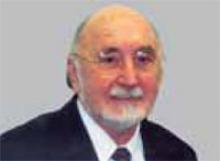In breast cancer, for example, the use of high-dose chemotherapy with stem-cell rescue became the standard of care before there were any randomized data demonstrating its value. When the randomized studies did finally come in, many clinicians were surprised to find that this aggressive regimen was no better than standard therapy and had worse side effects.7 Now, the use of this therapy has virtually ceased.
It would behoove us to follow this lead in the use of hormones for prevention. In a recent analysis at the National Cancer Institute meeting on HRT, Deborah Grady could find no subgroup, including women with an osteoporotic fracture, where the benefits outweighed the risk.8
Exercise prescriptions should replace hormones, and weight should be monitored rather than bone density in a woman in her 50s.
—Dr. Love
Risks of rushing to substitute
What should we do? Many clinicians may wish to quickly find something else to give women—be it selective estrogen receptor modulators, bisphosphonates, or bio-identical hormones. In my view, that misses the point. This new data on postmenopausal hormone therapy should cause us to question the hypothesis upon which its use was based.
Perhaps we do not have to treat postmenopausal women with anything. Rather than equate menopause with ovarian failure or estrogen deficiency, perhaps we can regard it as the natural progression of a woman’s life. New studies indicate that postmenopausal women who are able to generate as little as 5 pg or more of their own estrogen per milliliter of serum have almost no fractures; these data suggest that we probably do not have to “replace” hormones in the majority of women.9
In addition, the data suggest that age is a more potent predictor of fracture risk than bone density.10 Many experts are suggesting that osteopenia should not be treated and that bone density should not be measured until age 65.
Deaths from heart disease are at all-time lows due mostly to improved treatment techniques rather than prevention.11
Lifestyle changes are still the best prevention
I would suggest that the warning label on the estrogen and estrogen-progestin formulations be viewed as a caution against the whole concept of widespread use of drugs in healthy women for prevention. Lifestyle changes remain the best way to maintain quality of life and prevent the diseases of aging. Weight control, exercise, diet, and not smoking are still the safest approaches to a healthy life.
Rather than continue this debate, we should put our energies into devising strategies to help women achieve healthy lifestyle goals. Exercise prescriptions should be the replacement for hormones, and weight should be monitored rather than bone density in a woman in her 50s. Advice about smoking cessation needs to take the place of discussions of breast self-exam.
My hope is that this warning will serve as a wake-up call for all who care for women.
Dr. Love reports no financial arrangements or affiliations with any of the companies that manufacture products mentioned in this article or their competitors.
REFERENCES
1. Hulley S, Grady D, Bush T, et al. Randomized trial of estrogen plus progestin for secondary prevention of coronary heart disease in postmenopausal women. JAMA. 1998;280:605-613.
2. Writing Group for the Women’s Health Initiative Randomized Controlled Trial Risks and benefits of estrogen plus progestin in healthy postmenopausal women. Principal results from the Women’s Health Initiative randomized controlled trial. JAMA. 2002;288:321-333.
3. Nachtigall LE, Nachtigall R, Nachtigall RD, Beckman EM. Estrogen replacement therapy II: A prospective study in the relationship to carcinoma and cardiovascular and metabolic problems. Obstet Gynecol. 1979;54(1):74-79.
4. Stampfer MJ, Colditz GA. Estrogen replacement therapy and coronary heart disease: A quantitative assessment of the epidemiologic evidence. Prev Med. 1991;20:47-63.
5. Grodstein E, Stampfer MJ, Manson JE, et al. Postmenopausal estrogen and progestin use: The risk of cardiovascular disease. N Engl J Med. 1996;335:453-461.
6. Barrett-Connor E. Postmenopausal estrogen and prevention bias. Ann Intern Med. 1991;115:455-456.
7. Peters W, Rosner G, Vredenburgh J, et al. A prospective, randomized comparison of two doses of combination alkylating agents as consolidation after CAF in high-risk primary breast cancer involving ten or more axillary lymph nodes: Preliminary results of CALBG9082/SWOG9114/NCIC MA-13. Proc Am Soc Clin Oncol. 1999;18:1a.-Abstract.
8. Grady D. Postmenopausal hormone therapy: balancing the risks and benefits. Presented at: National Institutes of Health Scientific Workshop on Menopausal Hormone Therapy; October 23, 2002; Bethesda, Md.
9. Cummings SR, Browner WS, Bauer D, et al. Study of Osteoporotic Fractures Research Group. Endogenous hormones and the risk of hip and vertebral fractures among older women. N Engl J Med. 1998;339:733-738.



